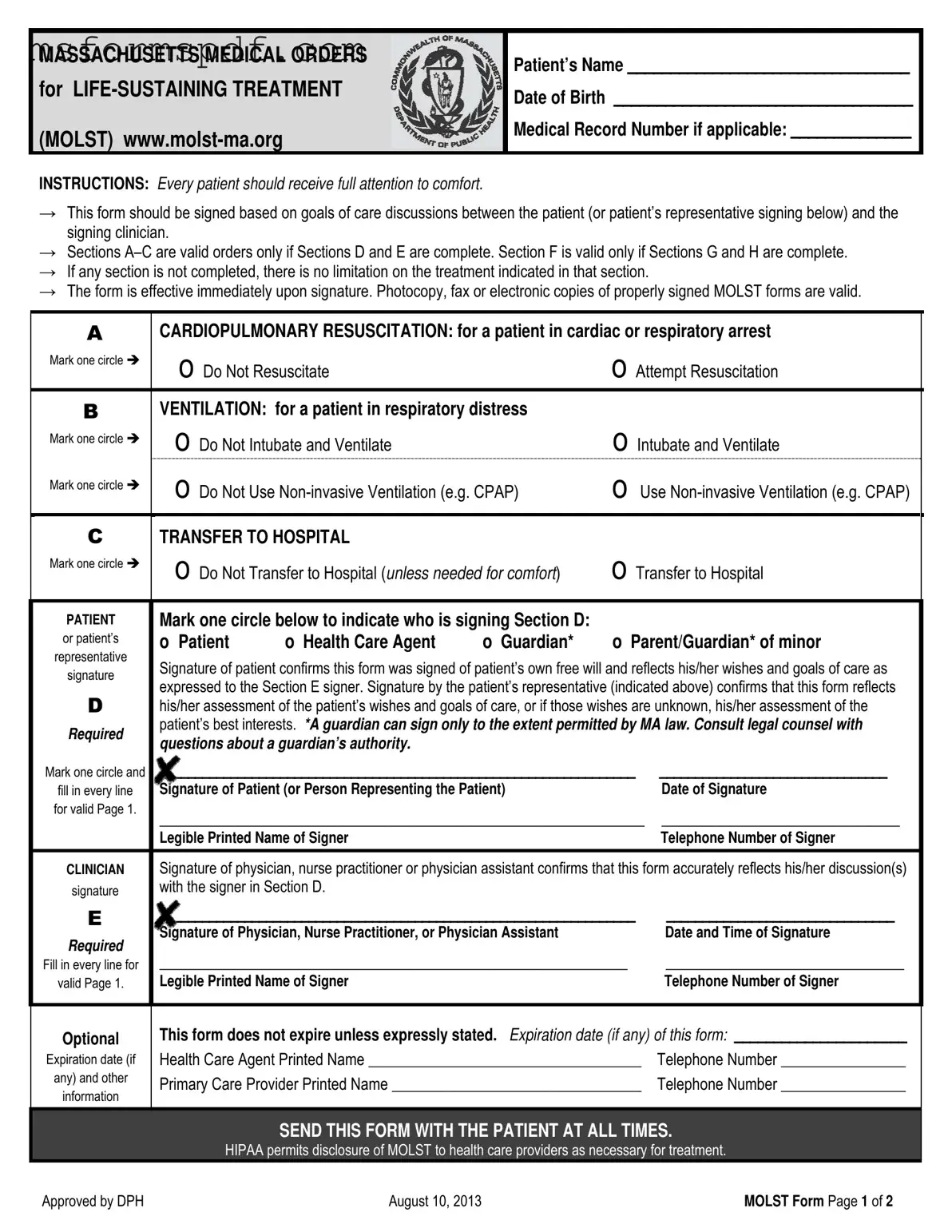Free Massachusetts Molst Template in PDF
The Massachusetts Medical Orders for Life-Sustaining Treatment (MOLST) form is a crucial document that outlines a patient's preferences regarding medical treatment in emergency situations. Designed to facilitate conversations between patients and healthcare providers, this form ensures that a patient's wishes are respected and followed. By clearly stating treatment preferences, the MOLST form aims to provide clarity and comfort during critical moments.
Launch Editor Now
